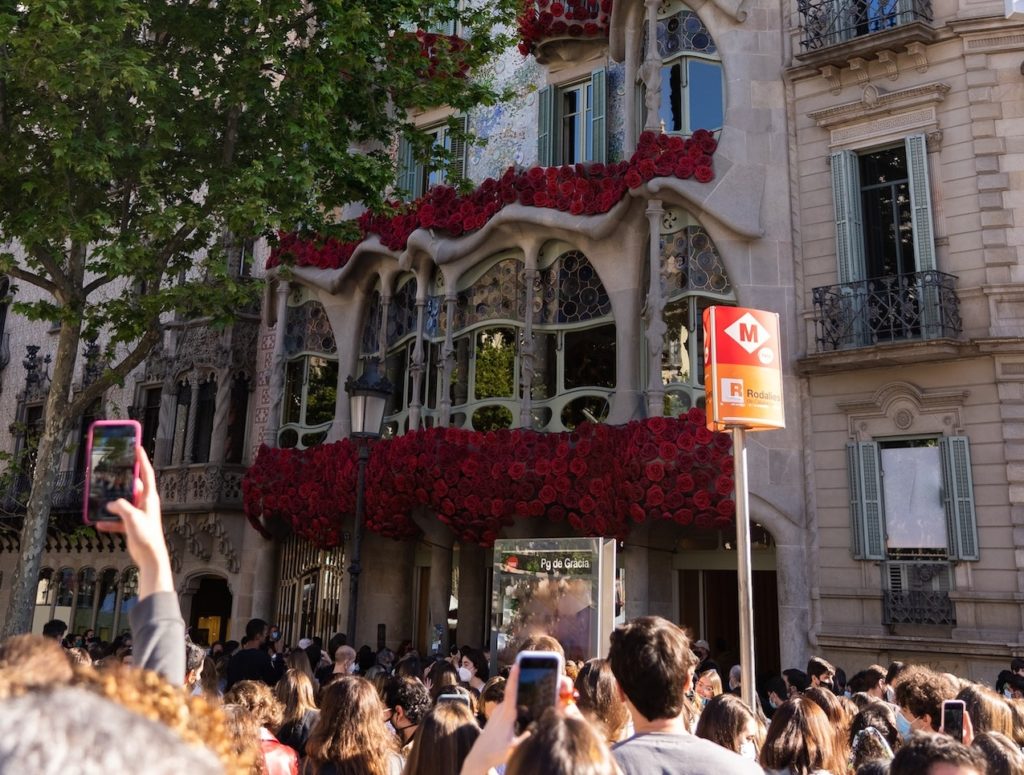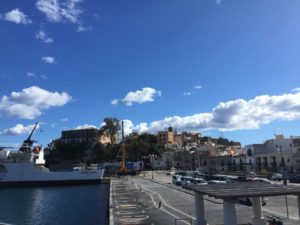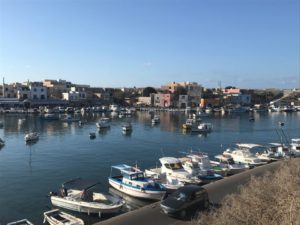On April 23, the feast day of Sant Jordi, the Catalan patron saint, Barcelona becomes an immense open-air market of roses and books, with many stalls set up to allow lovers to exchange gifts in accordance with tradition. But the celebrations already begin on the 19th and continue for the following days, as we can see from the summary of the municipal programme:
- From 19 to 21 April: dialogues with writers in the library;
- 22 April: proclamation of the reading in the Saló de Cent of the City Hall;
- April 23: literary breakfast;
- 23 April: pedestrian superblock with stalls of florists and booksellers.
To reach the capital of Catalonia starting from the Italian peninsula, the Civitavecchia – Barcelona ferries may be useful, which leave their moorings six days a week from the Lazio port in the late evening, to arrive at their destination the following evening, with comfortable accommodations and pleasant edge.
Feast of the Catalan patron saint in Barcelona
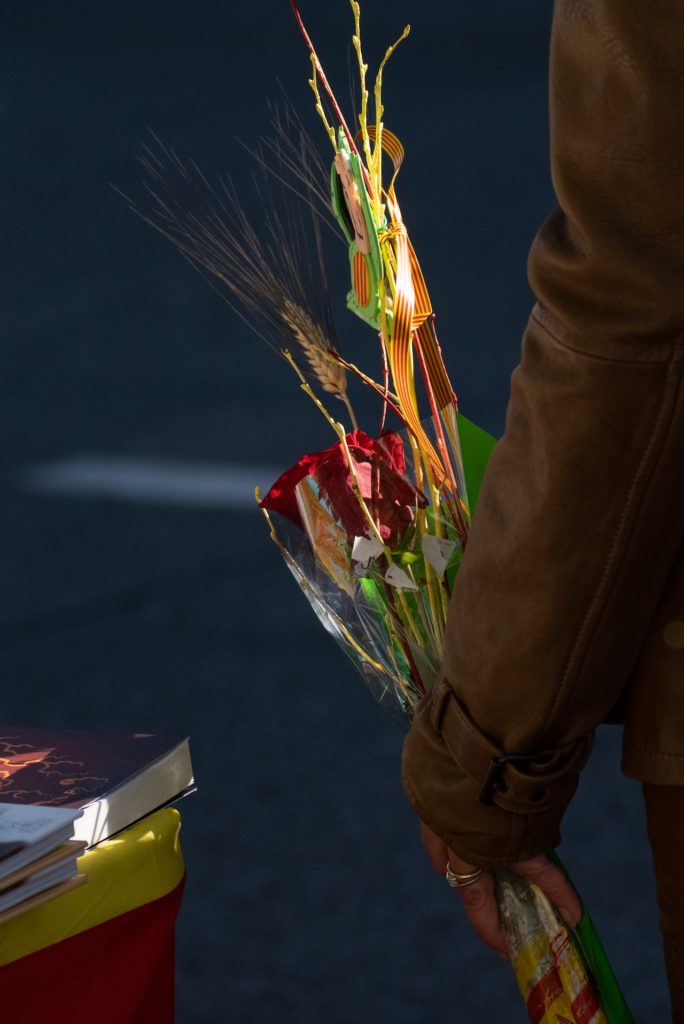
La Diada de Sant Jordi, the day of Saint George, patron saint of Catalonia since 1456, falls on April 23 and it is also known as the day of the rose and the book fair: lovers and all those who love each other exchange these gifts. The festival became popular starting from the 18th century and it is currently also a major civic, cultural and identity festival.
The tradition of giving a red rose is linked to legend and dates back to the Middle Ages: St. George killed the dragon, which was oppressing the population, to save the princess, to whom he gave, in the Catalan version, a red rose picked from the Montblanc rose garden, where the blood of the dragon struck by the knight’s sword had been spilled.
The custom of giving away a book is more recent: it began to be celebrated in the early twentieth century on the same day of the month in which, in 1616, both Cervantes and Shakespeare died. In 1995, UNESCO adopted April 23 as World Book and Copyright Day.
In the cloister of the Cathedral, seat of the archdiocese, in the Barri Gòtic, there is the fountain of Saint George, which is represented both in the sculpture above and in the keystone, as well as in the chapel of Santa Teresa located in the same cloister. In the Vallcarca district, however, a small church has been dedicated to him.
According to some interpretations, Antoni Gaudí wanted to represent the legend of Sant Jordi in the architecture of Casa Batlló, a suggestive modernist work located in Passeig de Gràcia, declared a UNESCO World Heritage Site. The upper exterior of the building looks like a dragon’s back, the four-armed cross looks like a sword, and the balconies and columns of the grandstand resemble the remains of the monster’s victims. The facade, for the anniversary (as seen in the cover image), is decorated with red roses.
The program of the celebration
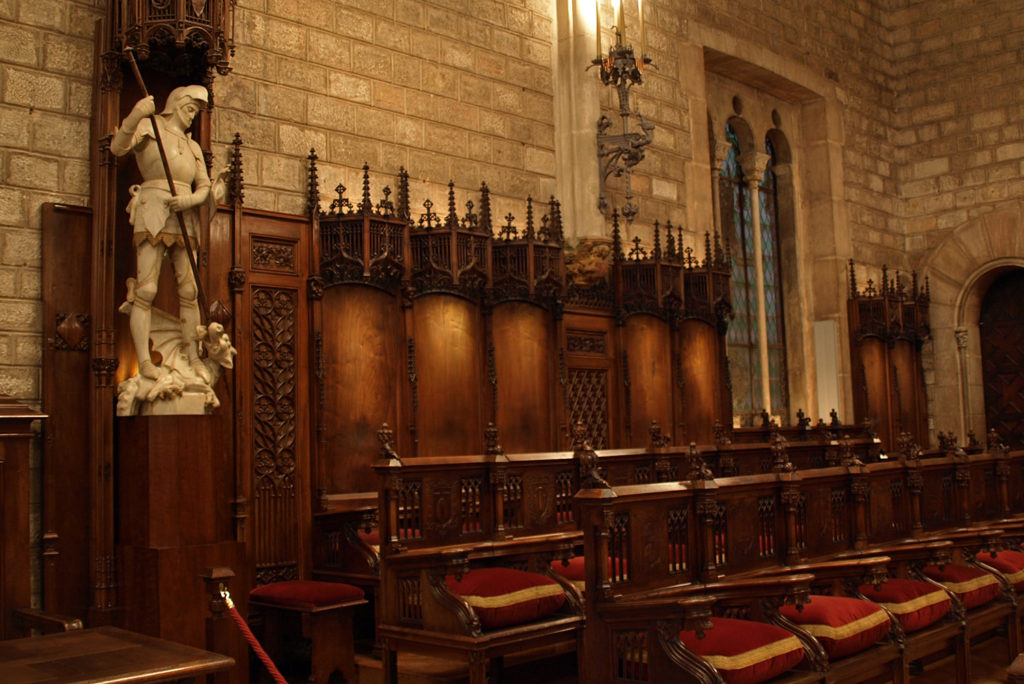
From 19 to 21 April, as a prologue to the key day, Biblioteques de Barcelona offers a space for authors and readers to meet. Dialogues are three days of conversations with writers from around the world.
On April 22 there is the proclamation of the reading, an honorary event held in the Saló de Cent of the municipal building (Ajuntament), located in Plaça de Sant Jaume, in a hall where institutional events usually take place and there is a sculpture of the saint. For the occasion, a famous writer talks about his work and the role that reading and libraries have had in his life.
Literary breakfast is scheduled for 23 April in the Palau de la Virreina, a Baroque and Rococo style building located on La Rambla (organized for writers by the municipality in collaboration with the Guild of Booksellers, the Guild of Publishers and the Association of Catalan Writers), and the superblock, an urban pedestrian space with many rose and book stalls set up within the perimeter formed by the streets Gran Via de les Corts Catalanes, Avinguda Diagonal, carrer de Pau Claris and carrer de Balmes. Passeig de Gràcia is reserved for professional shopkeepers, while associations and organizations can be found at the crossroads on the Rambla de Catalunya. From 21 to 23 April, booksellers and florists will also have access to exclusive public spaces in other parts of the city, practically in every district.
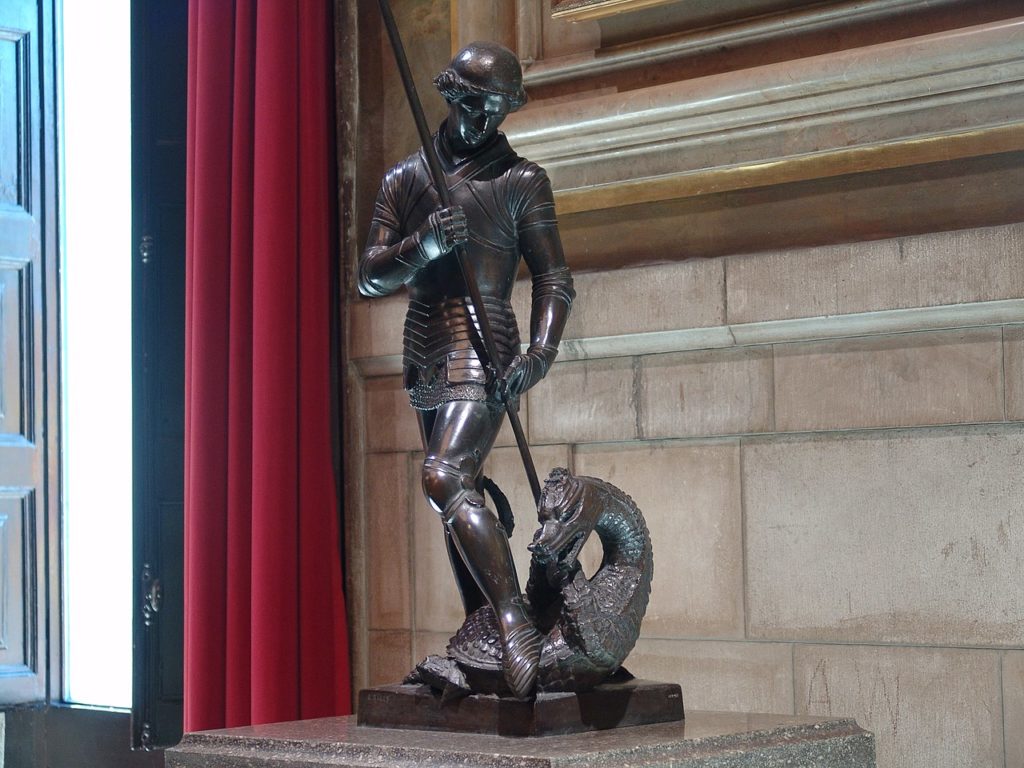
This is also one of only three days a year when the Gothic and Renaissance-style Palau de la Generalitat de Catalunya, the seat of the presidency of the Mediterranean-facing autonomous community of northeastern Spain, is open to the public.
Just opposite the Generalitat is the City Hall, where, in the Saló de Cent, originally designed, with three naves and an oval-shaped dome, as a chapel dedicated to Sant Jordi, a mass is celebrated on the occasion of the anniversary, at the end of which the blessing of the roses takes place.
The sardana, the traditional Catalan circular group dance, is danced for the occasion in Plaça Sant Jaume; even bookstores and bars host readings by literary authors and many writers sign books outdoors and in shops; the center of Barcelona is also animated by street artists and musicians.

